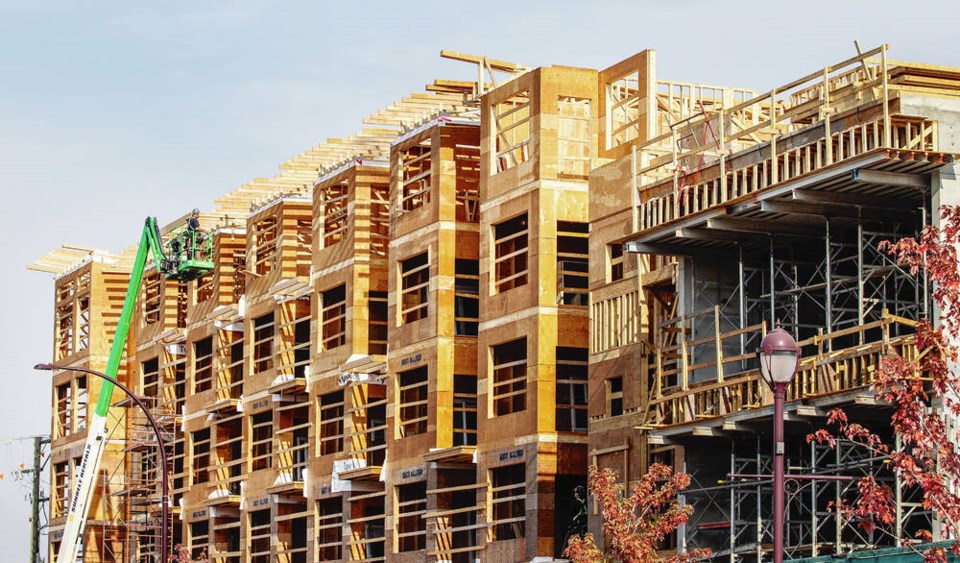The pace of home construction in Greater Victoria is likely to slow down but it’ll still be busy, according a sa���ʴ�ý Real Estate Association forecast.
Housing start figures released by the sa���ʴ�ý Mortgage and Housing Corporation this week show Greater Victoria homebuilding is slightly behind last year’s pace, with 3,314 units started in the first nine months of this year compared with 3,488 in the same period in 2021.
Industry insiders suggest the slowdown in the construction and real estate industries is due to rising interest rates, but BCREA chief economist Brendon Ogmundson said that’s not the whole story.
“I expect we will see new home construction slowing … due to market conditions and high borrowing costs, but there is a lag effect as projects that are getting under construction now have been in the works — permitting — for some time,” he said. “It is the next phase of developments that will be perhaps delayed by higher interest rates.”
Ogmundson pointed out Greater Victoria builders had a record year in 2021. Maintaining the pace would be difficult and a slight dip brings the region back in line with normal years — the 20-year average for housing starts in Greater Victoria is about 2,300 units and the 10-year average is 2,900.
Greater Victoria’s residential construction sector broke a 45-year-old homebuilding record in 2021 with 4,809 new homes started, breaking the record of 4,439 set in 1976.
Ogmundson said there are still sparks of heavy activity, as the region broke a monthly housing start record in July.
The BCREA also noted residential sales around the province have dropped significantly since September last year.
“Mortgage qualifying continues to be a significant hurdle for many potential buyers as interest rates rise,” said Ogmundson. “In addition, many trends that drove demand in smaller markets, such as remote work and the quest for affordable space, have faded in prominence. As a result, we see a stronger pullback in markets outside of major metropolitan areas.”



